Tag: Bodybuilding
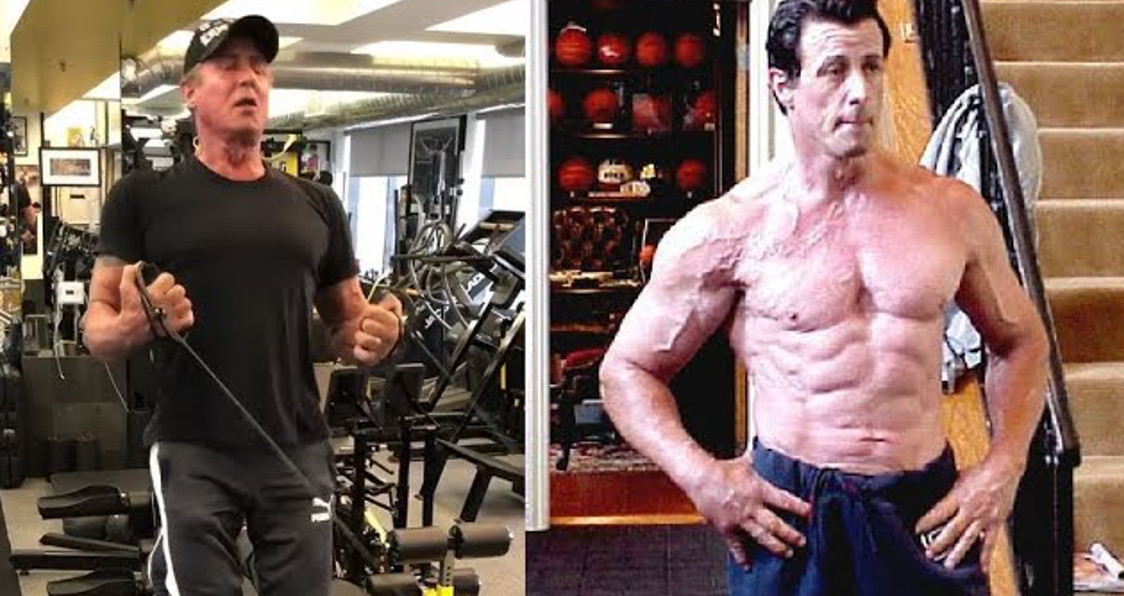
Sylvester Stallone Shows Off Massive Arms at 74 Years Old
Age is just a number for Sylvester Stallone and he is proving that by showing off his huge arms on Instagram.
Is Sylvester Stallone using fake weights? Have they been legitimate? One thing we do know is that whatever he has been doing — it seems to be working. In his latest Instagram post, Sylvester Stallone shows off the results of his hard work with a photo of his massive arms.
Over the last month, there have been discussions and rumors going around that Stallone might be training with fake weights. These speculations came to light thanks to an Instagram video that was posted back on June 7.
Stallone was videotaped lifting himself up from the ground while holding two 45lb plates. There is belief that this video was made for publicity. If that is the case, then it was done successfully since the video has been viewed 4.9 million times. Since then, the Hollywood star has taken to the social media site to show off some progress to his 13.3 million followers.
Most recently, the 74-year-old Stallone showed off his massive arms after a gym session that he did not want to participate in.
“Went to damn the gym today when I didn’t want to. But, Doing things when you do NOT want to , I found an extremely important key to success. Plus, I have to get ready to start doing some old school ACTION!”
For nearly 50 years now, Stallone has been an inspiration to those wanting to improve their lifestyle and build. He is continuing to do so by preaching keys to success, especially when it comes to the gym.
Stallone has been known for his impressive physique. He burst onto the scene in 1976 after the release of “Rocky.” Stallone went onto star in five movies within the series. In the midst of the craze surrounding Stallone as Rocky Balboa, he continue to show off his carved exterior during “First Blood” as John Rambo.
Stallone is up there with the likes of Arnold Schwarzenegger and Lou Ferrigno when thinking of chiseled actors known for their build. Today, Stallone still features that rock-hard upper body and could be showing it off on the big screen soon enough.
In his Instagram post, Stallone mentions beginning to prepare for “some old school action.” It is unknown what he means by this but Stallone is part of three movies that are being released soon. We know that one is a voice role in the new “Suicide Squad.” Rumor has it that Rocky Balboa could be making a return, this time as a mentor. Nothing has been confirmed just yet.
Fake weight or no fake weights, there is no doubt that Stallone still hits the gym extremely hard. Stallone has shown that on Instagram and is on his way back to show it in movie theatres all around the world.
For more news and updates, follow Generation Iron on Facebook, Twitter, and Instagram.
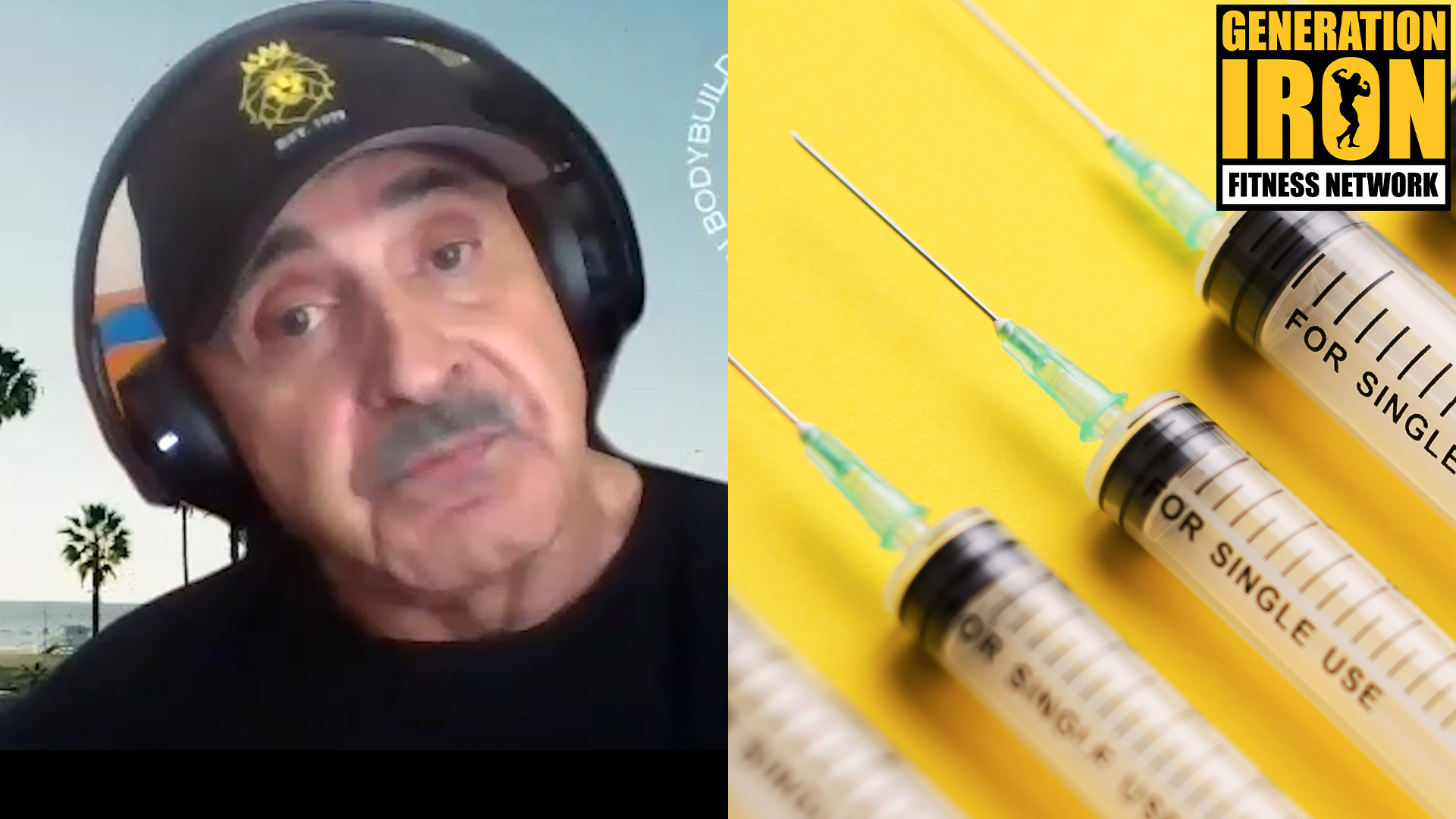
Samir Bannout: Insulin Works… But Is Ruining Modern Bodybuilding
[embedded content]
Samir Bannout talks on how insulin works in bodybuilding short term but ruins physiques (and health) long term.
One of the newer controversial substances to enter bodybuilding is insulin. A drug that offers benefits to those in need has been transformed into another tool for building muscle fast in the sport. Bodybuilding guru Milos Sarcev claims to have introduced the drug into bodybuilding and stands by its safety when used correctly. Others fear that it leads to major health issues and early deaths in the sport. In our latest GI Exclusive interview, Samir Bannout goes in-depth about insulin, how it works, and why he thinks it is ruining modern bodybuilding.
Samir Bannout is seeing a trend in modern bodybuilding over the past few decades. To be fair, it’s a trend we’ve all been noticing for quite some time now. Competitive bodybuilding is becoming more and more about excessive muscle mass. Starting from Dorian Yates, to Ronnie Coleman, and jumping ahead to the current Olympia champion Big Ramy – a clear through line is seen. Pushing the limit on muscle mass is the goal of modern bodybuilding.
With such emphasis put on building mass as much and as fast as possible, new protocols with drugs have been concocted to optimize this goal. Insulin is one such drug that has grown in popularity. Insulin can provide faster muscle growth – but it can also have much more dire consequences when abused.
We asked Samir Bannout about his opinion on the direction of modern bodybuilding. What started as a conversation about excessive muscle mass turned into a deep dive into the abuse of insulin. Perhaps the two are connected. In Bannout’s mind, they are both tied together and have put a negative impact onto professional bodybuilding.
Samir Bannout argues that the focus on massive muscle above all else can lead to an impressive physique. But that physique will only last in the short term. He uses legendary champions like Dorian Yates and Ronnie Coleman as examples. Yes, they did both win multiple Mr. Olympia titles in the long term. Bannout isn’t arguing that. But what he does believe is that both of these athletes looked phenomenal the first two to three years as champion… then starts to look worse.
Ronnie Coleman, for example, eventually became an eight time Mr. Olympia champion. That’s the most ever recorded in the history of the sport (only tied with Lee Haney). That being said, most people find Coleman’s physique peak to be around 2001. After that, while he did continue to win – it was clear his physique never hit the same level again.
Now fast forward to today. Modern bodybuilders are still chasing that legendary massive physique of Ronnie Coleman. But now there are new drugs that promise to bring muscle growth even fast. Insulin has become, to some, a necessary element in becoming a larger than life bodybuilder. Much like the overall obsession with excessive muscle – this has Samir Bannout worried.
Samir Bannout doesn’t argue that the drug isn’t effective. It does indeed help build muscle as bodybuilders have been using it. But at what cost? Samir Bannout believes that even when used correctly, consistent use of insulin leads to short term success and long term failures. At worst, it can lead to serious health issues or even death. At it’s best, it will give you two or three years of an incredible physique… and then the quality starts to go down.
“It’s [insulin] a ruin for modern bodybuilding. It’s a ruin for bodybuilding,” Samir Bannout states in our interview. He continues:
“I mean look, now you look at guys like Chris Bumstead. He comes out and stay waisted, sharp, and tight. But those bigger guys who are using insulin on a regular basis. What happens? They may get lean in this area but… you are growing the visceral fat in the inner intestine. It’s imminent that you will have the bulgy fat stomach after a year or two. It may work the first year but as it goes on it will get worse and worse.”
Samir Bannout is no doctor. His statements here seem to be solely based on what he’s observing. He doesn’t know exactly who is and who isn’t using insulin. But he fears that it’s creating a shorter shelf life for bodybuilders. Both in terms of health and the longevity of an amazing physique.
You can watch Samir Bannout go into complete detail about mass muscle and insulin in bodybuilding by watching our latest GI Exclusive interview segment above!

Back Extensions vs Glute Ham Raise
Which Exercise is Best for Posterior Chain Development?
For posterior chain development, there are a number of exercises that should be prioritized and performed on a regular basis.
Back extensions and glute ham raises are two resistance exercises that are very commonly used for strengthening the low back, glutes, and hamstrings.
This article will provide information on the technique of the back extensions and glute ham raises, investigate benefits and explore the differences that exist between both exercises.
Back Extensions Technique
Back extensions are most commonly performed using a back extensions bench or on a glute-ham developer (GHD) and some gyms even contain back extensions machines.
The bench put the performer in a position where the upper thighs are in contact with pads so to isolate the legs thus ensuring that movement can only occur through the hips.
Be aware that some back extension set-ups will place you either at a 45-degree angle whereas others will start you at a 90-degree angle.
The exercise particularly targets the lower back muscles – particularly the spinal erectors (1). The exercise also activates the hamstrings to a lesser degree.
To effectively perform the back extension, follow the four simple steps detailed below.
1) Adjust the bench or GHD so that the feet are anchored and the upper thighs make contact with the pads. In the starting position, the legs should be straight and the body held at either a 45 or 90-degree angle.
2) Before tipping forward, drive the chest up, pull the shoulder back and actively squeeze the core muscles.
3) Keeping the back flat, in a controlled manner hinge from the hips so that the upper body drops down towards the floor.
4) Having dropped down, focus on contracting the glutes and hamstrings powerfully in order to return to the starting position. Squeeze all posterior muscles tightly at the top before repeating these steps.
Glute Ham Raise Technique
Glute-ham raises are performed on the GHD and are an effective developer of the posterior chain, particularly the hamstrings (as the name suggests) (2).
While the glute-ham raise places more of a demand on the hamstrings and glutes than back the back extension, less stress is applied to the spinal erectors.
With many moving parts, take care when setting up the GHD. Ensure that the pads are placed in the correct position otherwise the risk of sustaining an injury may increase.
As with the back extensions, make sure that the rear pads anchor the feet in position and that the front pads prevent the knees from moving forward.
Follow the subsequent four steps to safely perform the glute-ham raise.
1) Start by adjusting the GHD so that the torso is perpendicular to the floor with the legs anchored and the knees tight to the front pads.
2) Before dropping towards the floor, lift the chest, squeeze between the shoulder blades, and brace the core muscles.
3) Keeping the movement controlled and the back straight, slowly extend at the knees so that the trunk falls forward until it is parallel with the floor.
4) From this position, focus on contracting the hamstrings and glutes to pull the body back up to the starting position.
Back Extensions and Glute-Ham Raises Benefits
This section will detail three significant benefits associated with both the back extension and glute-ham raise.
1) Increasing StrengthThe most obvious benefit related to both of these exercises is in terms of strength development.
Regularly performing either exercise will apply stress to many posterior chain muscles and cause the muscle tissue to breakdown at a microscopic level.
Providing that recovery is prioritized, the muscles will then rebuild and become significantly stronger (3).
2) Facilitating PerformanceIn connection with improving strength, both of these exercises can be effectively used as accessory movements to facilitate improvements with other lifts.
Building strength and enhancing overall movement through the back extension or glute-ham raise can lead to an improved performance with compound exercises such as squats, deadlifts, and the Olympic lifts.
3) Injury PreventionFinally, building stronger hamstrings, glutes and spinal erectors can decrease the likelihood of injury occurring.
The spinal erectors play a monumental role in preventing excessive spinal flexion. Therefore, by increasing the strength of these muscles the risk of injury to the spine may decrease.
In a similar vein, developing hamstring and glute strength will reduce the chances of sustaining an injury to the lower extremities.
For those who participate in sport, the hamstring is a site that is commonly injured (4), therefore, for athletes, great emphasis should be placed on hamstring development.
Differences between Back Extensions and Glute Ham Raises
While both exercises are similar in terms of set up and execution, there are slight differences to be aware of. This section will highlight four differences that exist between the two.
It is important to know these differences as this will impact your programming. At times in your training it may be necessary to select the back extensions over glute-ham raises and vice versa.
1) Hamstring Emphasis
Although back extensions do work the hamstrings, the glute-ham raise is superior for hamstring development due to the positioning of the body.
For back extensions, movement occurs at the hip joint while the legs are kept straight. The movement of the glute-ham raise originates from the flexion and extension of the knee joint.
Considering that the hamstrings cause knee flexion and the glute-ham raise requires flexion of the knee, the exercise places a great load on the hamstrings.
There are a number of methods for increasing the load on the hamstrings including adding a resistance band, incorporating isometrics, wearing a weighted vest or using free weights.
However, do take great care when adding resistance as it is imperative that the hips remain fixed and the spine stays in a neutral position throughout.
Finally, it is likely that you will not be able to load the glute-ham raise to the same extent as the back extension.
2) Lower Back Emphasis
As mentioned, during the lower back extension the legs remain straight while movement occurs through the hip joint.
Because no movement occurs at the knees, the hamstrings have less involvement in the movement and it is the spinal erectors that are subject to the greatest load.
The spinal erectors work to keep the back straight and protect the spine. Therefore, the demand on these muscles can be increased by adding a slight spinal flexion and extension.
While this is the case, ensure to avoid lumbar (lower) spine flexion especially with heavy weights as this has the potential to lead to severe injury.
In a similar way with the glute-ham raise, it is possible to load this exercise by placing a bar on the upper back on holding a weight tight to the chest.
One potential benefit of the back extension is that due to the movement patterns and muscles targeted, typically a greater load can be applied in comparison to the glute-ham raise.
3) Equipment Used
Traditionally both exercises are performed on different pieces of kit – a GHD for the glute-ham raise and an extensions bench for back extensions.
However, these two exercises are very versatile as both can be performed on an array of equipment.
As touched on previously, both exercises can be made more challenging through the use of resistance. Resistance bands and free weights are two commonly used pieces of kit.
If you are new to either or both of these exercises, ensure that you master the bodyweight version first before advancing onto resisted variations.
4) Complexity
When it comes to the complexity of both exercises, the glute-ham raise is certainly more challenging than the back extensions and therefore should be attempted by those who are at an intermediate or advanced level of training.
One of the most fundamental human movements is the hip hinge, however, it is not uncommon to see individuals moving from the spine rather than through the hips.
If you are new to either exercise, ensure that you have mastered the hip hinge first before moving onto either exercise.
From there, take care with the technique and be willing to spend a great amount of time learning and reinforcing good technique.
Doing this will effectively establish neural pathways and facilitate better movement. Only once you are proficient with the technique should you consider adding load to the exercise.
Progressive overloading the exercise will bring about the greatest gains and facilitate a better performance with a number of other lifts.
To apply progressive overload most effectively, manipulate the load, volume or intensity of the exercise.
Final Word
It is abundantly clear that both exercises are highly effective developers of a number of posterior chain muscles – particularly the glutes, hamstrings, and spinal erectors.
If your goal is to develop hamstring strength, it is recommended to focus on the glute-ham raise. However, if your goal is to develop your back, specifically the spinal erectors, concentrate on lower back extensions.
Let us know what you think in the comments below. Also, be sure to follow Generation Iron on Facebook, Twitter, and Instagram.
*Images courtesy of Envato
References:
1 -Lee, Ho-Seong (December 31, 2015). “Enhanced muscle activity during lumbar extension exercise with pelvic stabilization”. Journal of Exercise Rehabilitation. 11 (6): 372–377. doi:10.12965/jer.150249. ISSN 2288-176X. PMC 4697788. PMID 26730390.
2 – McAllister, Matt J.; Hammond, Kelley G.; Schilling, Brian K.; Ferreria, Lucas C.; Reed, Jacob P.; Weiss, Lawrence W. (2014-06). “Muscle activation during various hamstring exercises”. Journal of Strength and Conditioning Research. 28 (6): 1573–1580. doi:10.1519/JSC.0000000000000302. ISSN 1533-4287. PMID 24149748.
3 – Brumitt, Jason; Cuddeford, Tyler (2015-11). “CURRENT CONCEPTS OF MUSCLE AND TENDON ADAPTATION TO STRENGTH AND CONDITIONING”. International Journal of Sports Physical Therapy. 10 (6): 748–759. ISSN 2159-2896. PMC 4637912. PMID 26618057.
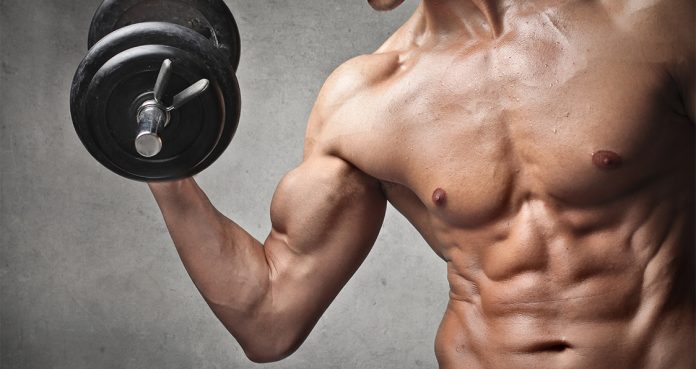
Hardest Muscles To Build
The hardest muscles to isolate and build mass.
Everyone has that specific set of muscles that infuriates them. That one spot where no matter how hard you train – no matter how hard you push yourself, you just don’t see the results you want.
But if you ask around the gym you’d probably find that there are some muscles most people agree to have a problem with. Those universal complaints that most bodybuilders have even after years of hitting the gym.
As always, we are happy to help by breaking down these tricky muscles and hopefully providing you with a better way to deal with them – leading you on a more pleasant path towards maximizing your over all muscle gain.
First thing’s first though, there is something to be said about genetics. As in, some people just have a harder time with certain muscles because of the DNA coursing through their body. It can’t be helped and sometimes that just means you have to work harder than the person next to you.
Also, proper form is key for all of these muscle groups. It’s key for any workout really – but part of what makes these specific ones so hard is because most people do not use correct form. So keep that in mind as you move forward with isolating these muscles. Whatever you are doing, you always want your spine to be properly aligned and make sure that you perform the full range of motion for the muscles you are working out.
CALVES
These are big ones. Calves are often either the most complained about muscle to build mass or the most overlooked. Either way they often pose more of a problem compared to other muscle sets. And there’s an actually a reason behind why they are so challenging. The anatomical configuration of the calf muscles resists the act of hypertrophy. Aka – by nature they literally resist muscle synthesis.
What is often the problem is that most people treat calves as an extra at the end of a workout – but because the calves are so much harder to develop they actually need to be focused on intensely. They key is to not make your calves an afterthought.
Here’s a breakdown on the three major muscles that make up the calves:
1. The gastrocnemius muscle (this is what gives the calf its curved shape).2. The soleus (the long flat muscle underneath).3. The Tibialis Anterior (this is the large frontal muscle).
That third one, the Tibialis Anterior might have surprised you. That’s because it is often overlooked when it comes to building those calves – which in turn makes the calves such a challenge for most people.
You must create a well structured workout routine that focuses on all three of these muscles in order to actually see growth. If you can focus on those then you will start to see some changes coming your way.
Here are a few examples of exercises you can do to pinpoint those calf muscles.
Barbell Seated Calf Raises Reverse Calf Raises (These will hit those oft overlooked Tibialis Anteriors!) Standing Barbell Calf Raises
LATS
The Latissimus Dorsi is another muscle that can be a real stinger in your workout routine if you don’t know the best ways to isolate and use correct technique. The main problem is that it is almost impossible to truly isolate the lats. What’s most important is to cut back on the amount of weight in order to perform the reps at a full range of motion (remember?). This will build the foundation for your lats leading to building actual mass in that area.
Surprisingly chin ups and pull ups are very effective in building your lats. Often experienced bodybuilders will be able to perform these with such ease that they use a dip belt with extra weight to push themselves even further. Elbow position is one of the most important aspects behind this. If your elbows are out wide you’ll trigger your upper lats. If your elbows are in tight you’ll be hitting up those lower muscles. Keep this in mind when performing your workout routine.
Also make sure to keep your hands facing away or down in order to maximize the amount of lat involvement.
Here are a few other suggestions to help build those back muscles.
Straight-Arm Pulldown Close-grip front lat pull downs Kneeling high pully rows One-arm standing cable rows
There you have it. Everyone may be different – but hopefully you now have a better understanding on how to handle two of the more challenging muscles over all.
What is your most challenging muscle to build? Let us know in the comments or shout it out to us on Facebook and Twitter!
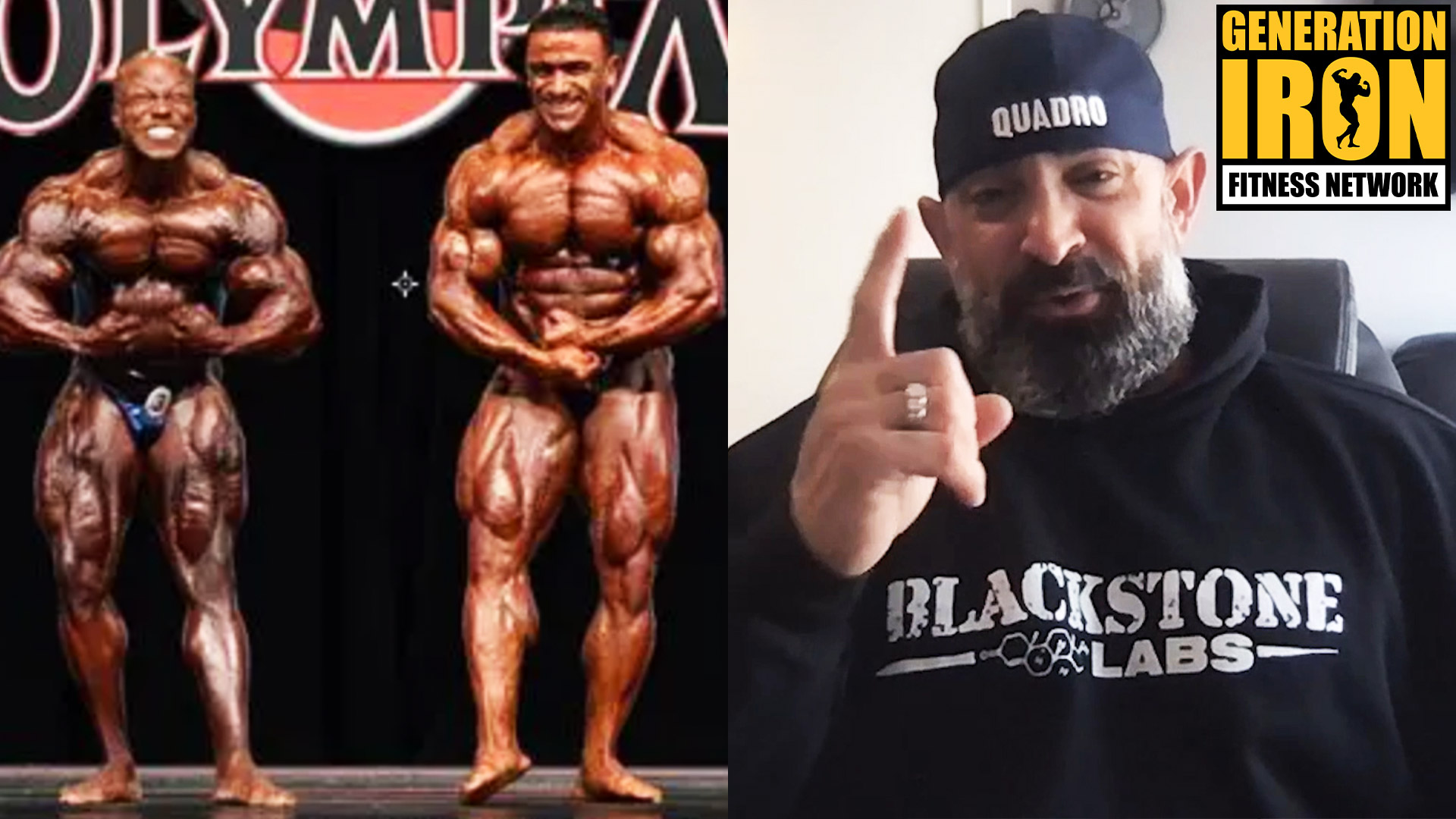
Guy Cisternino: “An Open Olympia Would Never Lose To A Men’s 212 Olympia”
Guy Cisternino talks about Hadi Choopan and the differences between Men’s 212 and Men’s Open. Hadi Choopan shook up the bodybuilding world in 2019 when he transitioned from Men’s 212 to Men’s Open and competed at the Olympia. Not only that – he ended up finishing third place. This wasn’t a fluke either, in the…
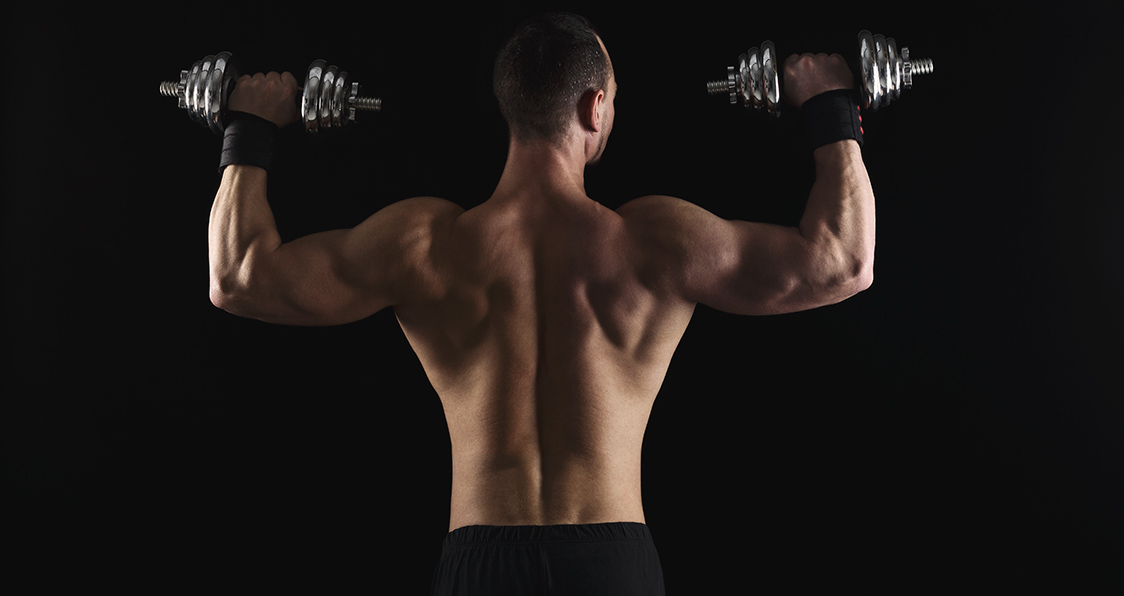
Build Boulder Shoulders With This Insane Workout
Give this workout a try for broad, more rounded shoulders that others will envy.
Sloping shoulders are a sign of physical weakness and is associated with laziness. Plus, it can start to really hurt your confidence and put you in a hole that you just don’t want to go. On the other hand, broad and square shoulders are linked with physically active and strong individuals. If you study the body postures, lethargic people will drag their feet and walk with dropped shoulders while the powerful people walk with an upright posture with broad shoulders. Wide shoulders are an essential part of a V-taper and can give your physique an appealing look. Oh, and it will seriously boost your confidence to.
Aside from the aesthetic that bigger shoulders can provide, it is important to look at the physical benefits of strong shoulders. As a vulnerable joint, strengthening and making sure those muscle and joints are properly taken care of can and will work wonders when it comes to physical performance. Why put yourself in a vulnerable place by not working those shoulders? Really put an emphasis on making these a priority so none of your training and performance goals falter.
Let’s take a look at a great shoulder workout to really boost all of our gains. Knowing what to do and the best ways to get there can be huge when it comes to strengthening and building up our shoulders. This workout is one to surely fire up your muscles to grow so you won’t be disappointed with the results.
Benefits Of Strong Shoulders
When it comes to building up those shoulders, there are some important benefits to know before diving right in.
Benefits of stronger shoulders include:
Increased strength and size: By working your shoulders, you will improve pushing movements for all those great exercises while also seeing them get bigger and turn into tiny boulders (1).
Injury prevention: Working those vulnerable joints can strengthen them and ensure no unwanted pain or injury takes place (2).
Functional benefits: For everyday activities, stronger shoulders overall can aid in functional strength so you can do other things that you love.
Improved posture: Posture can be a make or break for confidence and with stronger, more stable shoulders, you can improve your posture in not time and keep yourself walking taller (3).
Boulder Shoulders Workout
Let’s take a look at this awesome shoulders workout to really build that strength and size. A mix of a variety of exercises with things like supersets and drop sets tossed in will make for an engaging and worthwhile workout when looking to boost your gains. With proper form and a desire to really lift big, this workout is everything you need to really boost those boulder shoulders.
Exercise #1 – Superset
Arnold Press: 3 sets, 10-15-20 reps
Rope Front Raises: 3 sets, 10-15-20 reps
In this workout, we’ll be training the front, medial and posterior deltoids to get the round and full look. The Arnold press trains the medial and the front delts and will give your shoulders the round and bolder look.
Rope front raises are an isolation exercise which works the anterior deltoids. Using the cable machine keeps constant tension on the front delts throughout the movement which helps in better muscle fiber recruitment.
Exercise #2
Seated Side Lateral Raises: 6 sets, 10-12 reps
We’ll perform the lateral raises while being seated as it removes the probability of using momentum to lift the weights. In this exercise, we will start by performing 30 reps in the first set and end the exercise again with 30 reps on the sixth set.
Once you complete the third set, use the same weights to complete the fourth set. The challenge in this exercise is to use the same weights in the fifth and sixth set as you used in the first and second sets. It’ll be hard as the fatigue will have set in.
Exercise #3 – Drop Sets
Barbell Military Press: 3 sets, 8-12 reps
When done with the right form, the barbell military press can be one of the hardest exercises. This exercise is called the military press for a reason. You need to perform the barbell press with a strict form without using any momentum or jerking movement. The military press targets the medial delts effectively. Grab the barbell with a monkey grip and the bar should be resting right above your shoulders at the bottom of the movement.
At the top of the movement, your elbows should be locked out and the bar should be over your temples. With your arms extended over your head, your body should be in a straight line forming a right angle with the floor.
Exercise #4 – Superset
Alternate Dumbbell Front Raise: 3 sets, 10 reps (each arm)
Kneeling Cable Rear-Delt Flyes: 3 sets, 15 reps
The dumbbell front raise targets the anterior delts while the rear-delt flyes target the posterior delts. While performing the front raises, raise the dumbbells to your eye-level and bring them back to your sides.
While standing in the center of the cable pulley machine, grab the right cable with your left hand and vice-versa without any extension. Kneeling down eliminates the use of momentum and isolates your rear delts.
Exercise #5: Superset
Dumbbell Shrugs: 3 sets, 10-20 reps
Bent Over Dumbbell Rear-Delt Flyes: 3 sets, 10-20 reps
Dumbbell shrugs target the trapezius muscle. The dumbbell shrugs give you a better range of motion as compared to the barbell and you can move your shoulders closer to your ears. Start with lighters weights and progress to as heavy weights as you can lift.
Rear delts are one of the weakest muscle groups for most people. They can also be amongst the most stubborn muscles to develop. In the bent over rear-delt flyes, hold the dumbbells with a neutral grip and contract your muscles with every rep.
Wrap Up
Working those shoulders for increased strength and size can work wonders for all your gains and this workout above is a great one to boost those boulder shoulders. By building our shoulders up, we eliminate any vulnerable areas that can cause unwanted pain and strain that we just don’t want. Check out this workout above and really work to build those massive shoulders.
Let us know what you think in the comments below. Also, be sure to follow Generation Iron on Facebook, Twitter, and Instagram.
*Images courtesy of Envato
References
Uribe, Brandon P.; Coburn, Jared W.; Brown, Lee E.; Judelson, Daniel A.; et al. (2010). “Muscle Activation When Performing the Chest Press and Shoulder Press on a Stable Bench vs. a Swiss Ball”. (source)
Wilk, Kevin E.; Obma, Padraic; Simpson, Charles D.; Cain, E.; et al. (2009). “Shoulder Injuries in the Overhead Athlete”. (source)
Greenfield, Bruce; Catlin, Pamela A.; Coats, Peyton W.; Green, Ed; et al. (1995). “Posture in Patients With Shoulder Overuse Injuries and Healthy Individuals”. (source)
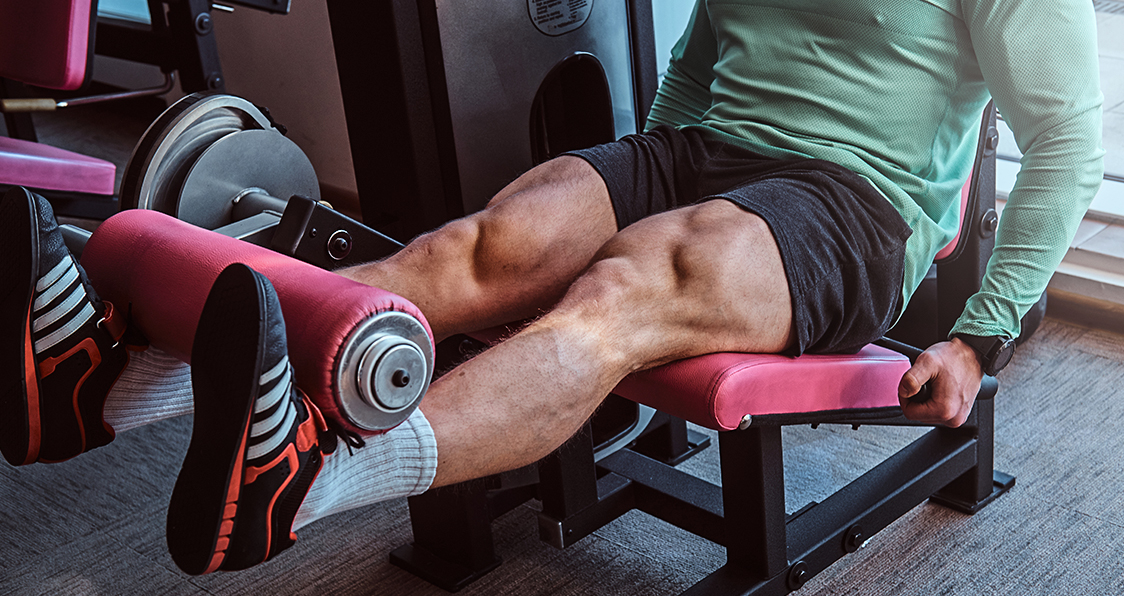
Let’s Revive This Forgotten Way of Building Monster Legs
Let’s Revive This Forgotten Way of Building Monster Legs
Remember when legs were everyone’s favorite muscle to train? We neither. Training legs, if done right, can be taxing. One big reason for exhaustion while hitting your wheels is that your legs are half of your body, and most of your blood and oxygen are pumped into them while training, leaving your brain and lungs running on fumes.
With the introduction of fancy training equipment like the seated hamstring curls, abductor, and adductor machines we have seen a big change in the leg workout routines. Make no mistake, we are not implying that people these days don’t have great legs.
Heck, pro bodybuilders on stage these days are arguably the freakiest since the advent of bodybuilding and we don’t mean this negatively. Most people attend bodybuilding shows to watch the freaks of nature in action and the guys on stage deliver on those expectations.
This article is not a comparison between the golden day and today’s bodybuilders. It’s aimed at pointing out the change in the leg training style over the years and to see if going back to the old ways can improve leg development.
Building Monster Legs The Old School Way
Our old-school quadzilla idol is none other than Tom Platz. If you’ve ever seen videos of Platz training legs, you’d realize it’s nothing like what we see in today’s YouTube leg training motivational videos.
Tom Platz’s leg workouts were so brutal that people attended his leg training sessions to learn his techniques and most people looked in awe when he got under the bar or sat on the leg-extension machine.
If you’ve ever watched the critically-acclaimed movie, Pumping Iron, how many bodybuilders did you spot using the abductor or hip-thrust machines? Could you complain about the wheels of any of the bodybuilders shown in the documentary?
Going Old School – Higher Reps
Coming back to Tom Platz. One of Tom’s biggest pieces of advice is, “the quads need higher reps than other muscle groups, like 15-20 or more to grow.” When was the last time you performed 15-20 reps of something while training legs?
These day’s we see a complicated system where people use a percentage of 1RM to determine how much weight they’d be lifting in a set. Don’t get us started on how to calculate a one-rep-max.
Most people deliberately underperform on a 1RM to set the bar low so that they can post fancy numbers on social media. Calculating 1RM can be complicated, and if you don’t want to open an excel sheet or a graph chart, you’d be better off doing what Platz did, perform higher reps.
Benefits of Higher Reps
Some people think that higher reps translate to lighter weights. This isn’t exactly true. Many lifters on a gaining program think that lifting light for higher reps is for people on a ‘cutting’ schedule.
On the contrary, lifters on a shredding routine think that lifting heavy for a lesser number of reps will make them bulky. Both these approaches are as far away from the truth as they can be.
Time under tensions (TuT) is one of the most important factors in adding muscle mass as it leads to the breaking of muscle fibers while training. With proper rest and diet, these broken muscle cells grow out to be bigger and stronger. The shorter your sets are, the lesser will be the tension on your muscle fibers.
Lifting Heavy is IN!
In today’s internet age, squatting 405lbs for 2 reps is way sexier than lifting 225lbs for 20 reps. Don’t believe us? Open your Instagram and look for an internet fitness celebrity who lifts moderate weights for higher reps.
Most of the content creators these days are chasing strength while undermining the importance of endurance. It maybe has something to do with the “go heavy or go home” mindset, which has its place but kills the benefits of time under tension.
Lifting super-heavy is undoubtedly hard but bearing the pain of high-rep quad exercises is not for the weak-hearted. 20 repetitions of squats will introduce you to soul-grinding, hypertrophy-inducing pain.
The Golden Age Leg Building Technique
Enough with the chatter, let’s get down to the business of building monster legs. Although we have spoken a lot about squats in this article, leg press, hack squat, leg extensions, and leg curls machines are great leg-building tools.
Quad Focussing Leg Press Workout:
1. Place your feet close to the bottom of the sled. Use a close-feet stance and push mainly through your toes rather than your heels to focus on your quads and limit the involvement of the hamstrings.
2. Close your eyes, shut your mind and go for 25 reps. Make sure you follow a full range of motion. Partial reps are going to do you no good. If you fail at around 15-20 reps, lighten the load and complete 30 reps. Getting the weights right for 25 reps is going to take 2-3 trial runs.
3. Perform three sets of these “sissy” sets. But it doesn’t end here. Put on some plates on the sled and do one final set of 8-10 reps. We’re here to get the best of both worlds, remember?
You can follow this same technique for all your leg exercises like squats, leg curls, extensions, and hack squats.
Leave Your Brains at Home Technique
There is another Tom Platz technique for building monster legs that are hidden away since the Instagram fitness models took over – the ten-minute sets. Tom Platz once put 225lbs on the bar and performed squats for 10 minutes straight – without stopping.
Before you lose your shit, we’ll be the first to admit that this technique needs some tweaking. How about we turn the ten-minute sets into two-minute sets? We knew you’d like that.
P.S – you don’t have to stick with the lighter weights for higher reps philosophy. You are free to test your mettle by squatting heavier weights for higher reps.
P.S.S – by higher reps, we mean up to 50 reps.
P.S.S.S – maybe it’s time to change the conversation from “how much can you squat?” to “for how long can you squat?”
For how long can you squat, bro? Let us know in the comments below. Also, be sure to follow Generation Iron on Facebook and Twitter.
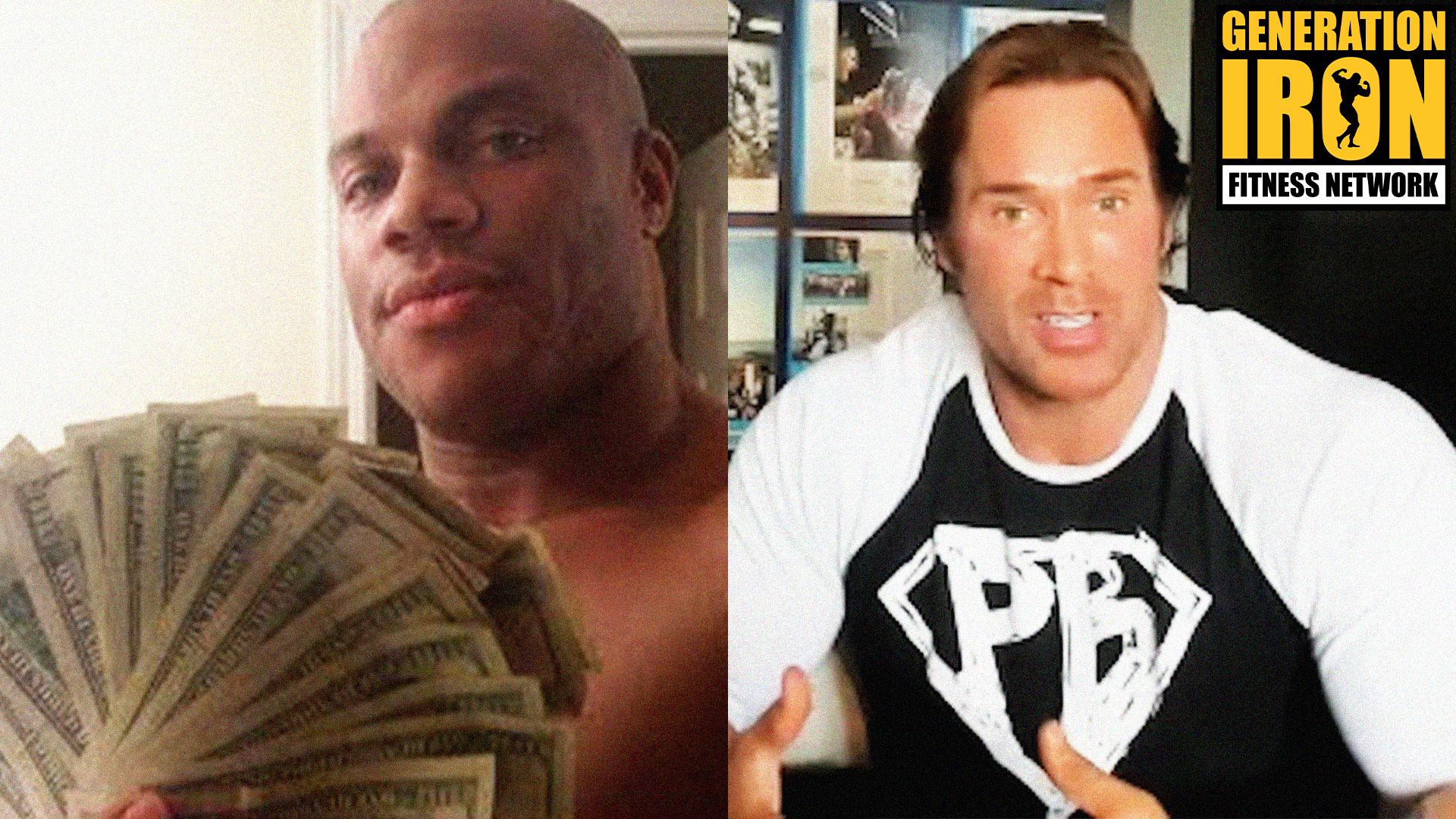
Mike O’Hearn: How To Really Make Money In Bodybuilding
[embedded content]
Mike O’Hearn talks about his personal rise to success and shares tips on how to make money as a bodybuilder.
Love him or hate him, Mike O’Hearn is a successful bodybuilder who has made multiple TV appearances, graced the cover of dozens of magazines, and owns accomplished businesses. He took his passion for bodybuilding and turned it into life success. It’s often talks about how competitive bodybuilding in and of itself hardly provides enough funds to make a living. So how does one become a financially successful bodybuilder? In our latest GI Exclusive interview, Mike O’Hearn details the key tactics for making money in bodybuilding.
During our latest video conversation with Mike O’Hearn, we asked him point blank – what advice would he give on how to make money in bodybuilding. He starts off with direct advice and then goes into his own past experiences as examples. His first advice – is to not copy other successful bodybuilders. If it worked for Ronnie Coleman, copying him will only make you a familiar version of that. You want to be original – that’s where real success comes in.
His second piece of advice is to “flip the bird to everybody.” What he means by this is to follow the beat of your own drum. This ties into his first tip. If others think you are breaking the mold too much and are too “weird” or “doing it wrong” – ignore them. True greatness is about breaking the mold. It’s about changing things. The status quo doesn’t make greatness – breaking it does.
Mike O’Hearn also touches on how the typical path to financial success has changed over the past few decades in bodybuilding. He describes how it used to be that you needed to win a big competition, then that got you interviews and TV appearances. If you took those appearances seriously and showed charisma – then you would get more opportunities and eventual sponsorships. Use that initial financial boost for more opportunities – work hard at them – and then suddenly you have a full and successful life.
Now Mike O’Hearn explains that the competition side of things is less important. With social media, you can focus first on your charisma, personality, uniqueness, and of course, your physique. If you get enough followers the opportunities will appear. Then you still have to work hard at those to turn it into a life of success.
Mike O’Hearn then dives into his past and his personal steps that led to his success. He claims that being one of 10 children made him realize the importance of money at a very young age. So when he started succeeding at bodybuilding – he put away all of his money rather than spend it on flashy items. This gave him a foundation for when the competitions stopped.
He then later met Arnold Schwarzenegger who advised him to use his savings to invest in real estate – that’s where the real money is. This is something Schwarzenegger himself did to help bolster his funds (besides, you know, the superstar acting). After O’Hearn did that – the rest is history. He continued to challenge himself and find new opportunities. With the money he had as a foundation he was able to take those risks and succeed long term.
Mike O’Hearn’s last piece of advice was probably the hardest one to swallow. At least for younger bodybuilders. He said that your 20s should be spent working your ass off so you have at least $100k in the bank by 30. He even said that’s on the low end. O’Hearn believes that too often young people spend their 20s having fun. It comes at the cost of building a financial foundation for success. Money later gives you less time in your life to grow that money. If you focus while you are young and have more energy – you can grow that money quicker.
They say that youth is wasted on the young. Mike O’Hearn seems to believe in that statement. But it seems O’Hearn was one of the few young men who decided to try and waste as little time as possible. It explains his intense work ethic with training and business to this day.
You can watch Mike O’Hearn’s full comments about money in bodybuilding by watching our latest GI exclusive interview segment above!
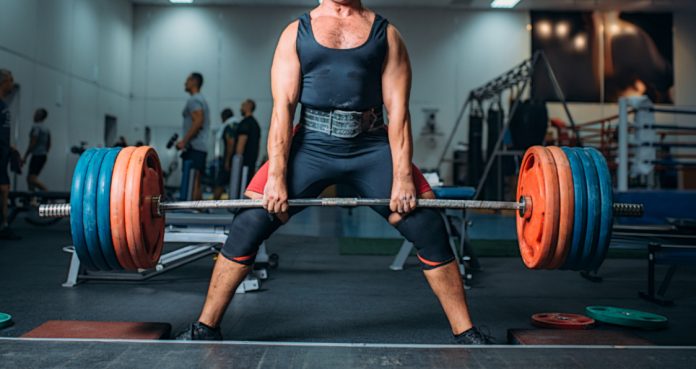
Top 6 Deadlifting Mistakes You Might Still Be Making
A change in bad habits leads to a change in life.
The deadlift is one hell of a monster workout. And as simple as it may look in theory, it is much more complex in practice. So how does a seemingly simple exercise leave so much leeway to do it incorrectly? Well, you’ve got to remember there’s a lot of moving parts. This exercise takes strength, coordination, and explosiveness, not to mention moving your bodies in ways that aren’t completely intuitive.
What many people forget is that the deadlift is a FULL body exercise. It’s not just engaging your legs but everything from your feet, to your core, to your shoulders. Many trusted fitness advisers have repeatedly said if they had to choose anyone exercise to do for the rest of their lives it would be the deadlift.
With all that movement it’s no wonder this exercise is so commonly performed incorrectly. This could lead to wasted gains and, even worse, injuries that keep you out of the gym. So let’s put the problems to rest with these top 6 deadlifting mistakes that you might making without even realizing it.
6. Rounding your back
This is by far the most common mistake we’ve seen by newbies and even some higher level lifters if they’re getting lazy. You don’t want to round your back or overcompensate by arching either. You want a flat back from the back of your head to your caboose. Instead of looking at the bar or at the ceiling try picking a spot a few feet in front of the bar and focusing on that throughout the lift.
5. Jerking your deadlifts
A lot of times guys get a hard on with deadlifts. They see all that weight and their emotions start to rise. They want to tackle it like Jenny Spinelli on prom night. While we’re all about getting in touch with your primal side, we’re going to recommend a controlled craziness on this one. Though you do push massive weight – this is actually a controlled exercise best performed with the arms locked. Try to keep everything tight and think of slowly pushing the floor away. Remember it’s a full body exercise, your arms are used as a lever.
4. Turning your dead into a squat
Of course, we’re not talking literally – but a common mistake with intermediates and even some experienced guys, leaning back too far on the bar will turn your deadlift into a squat. To remedy this raise your hips so your shoulders are over the bar. Keep the bar over your mid-foot with back straight. You can make adjustments according to your limbs but it’s pretty hard to screw it up from here.
3. Leaning back at the top
When you lean back at the top of a rep it squeezes the disk in your lower back which can possibly result in injury like a herniated disc. Stop when you knees and hips are locked, nothing more, nothing less. Sure pro powerlifters might do it but this is to show judges they’ve locked out. Some UFC fighters also fight with their hands down but I wouldn’t recommend that either.
2. Shin crushing
Do you dread the deadlift not because of the weight but because of the pain of the iron crashing into your shins at the beginning of each rep? Well stop it, it doesn’t have to be that way. As we mentioned in “squatting your deadlifts” keep the bar over your midfoot. This should keep it close enough to move along your body but far enough to eliminate unnecessary pain.
1. Switching your hand grip too early
Yes, we know it looks cool and all your friends are doing it, but switching to an inverted hand grip can be potentially dangerous. Changing the arm position also changes the muscles being used on by your back. By changing to an inverted lift before necessary – it can tweak a muscle or cause lower back injury. Try to stick with a traditional grip as long as you can. When the weight gets higher and you do eventually have to change over be sure to wear a lifting belt and go up gradually.
Well there you have it. Now that you’ve corrected these common mistakes you should be deadlifting like a true pro in no time. Don’t say we never gave you anything. So what do you think of these common mistakes? Were you performing any of these? Did we miss any? Hit up the comments section below and put in your two cents.
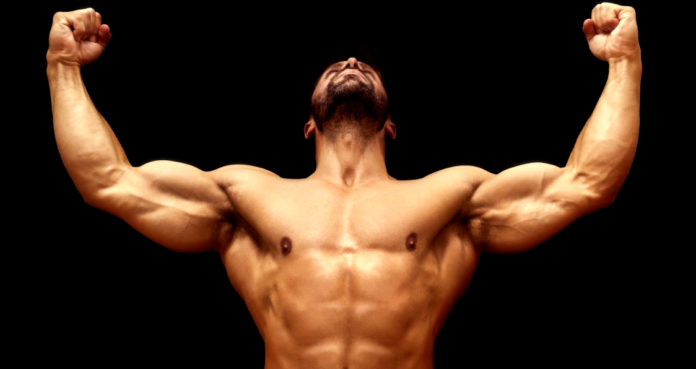
5 Things Every Bodybuilder Wish They Knew Before They Started Lifting
If I knew then what I know now…
Remember back in the day? The first time you stepped into a gym, heard about protein powder, and started counting calories? Like all things, you probably made a lot of mistakes. There are many things you think you know in theory that you can’t really understand until practice. Bodybuilding, being a hands on sport, is naturally something you have to experience.
No matter what rep range we tell you produces the biggest muscles, you have to practice this on your own body to see what works for you. However, being humans we are more alike than different. And as bodybuilders there are many experiences that we will share. So if you’ll give us a chance to plead our case, we’d like to give you 5 things we wish we knew before we started lifting.
1. You can never out train a bad diet
Many have tried, and many have failed. You can’t out train a bad diet. The problem with a bad diet is that after you’ve broken down your body in the gym, nutrition is what your body uses to build it back up, get it? So by simple logic, you’re fighting a losing battle. Balance diet and training or you’ll be doomed with the results.
2. You won’t lose muscle by taking a day off
We know your arms look slightly smaller at home than when you were pumping at the gym, but there’s no need to drop down and give me twenty. The body is a living thing and is always going through changes. After you break the body down (i.e. going HAM!) the body needs time to build back up, and that happens during a REST period. That’s right, rest! As counterintuitive as it may seem, when you stop working is when you actually grow. Funny that.
3. You don’t always have to train to failure
This goes hand in hand with lesson #2. Just as you don’t have to train everyday, you don’t always have to go to failure every time you train. It’s okay to do a set range and still have a couple more left in the tank. It’s also okay to go to the gym and not leave exhausted. Sometimes just priming your body is enough, remember there is a point of diminishing returns. Literally.
4. Train in all Rep ranges
This one is a funny one in regards to my personal experience. I remember when I first hit the gym with my best friend and we were absolutely clueless. My friend always wanted cuts and a six pack and I always wanted strength. So he would do multiple sets of 20 lb barbell curls and I would go balls to the wall and pretty much stop when I was in a quivering mess. What we eventually learned was that both were beneficial. You don’t have to enter a life long relationship with either training but instead could take the option of switching it up. Go ahead, experiment!
5. Understand that bodybuilding takes time.
Instant gratification. The gift and the curse of modern times. Unfortunately for us, unlike technology our bodies take time to learn and to grow. This means that even though you’re hitting the gym 5x a week and taking all the supps you can carry home from GNC, it’s still going to take time to gain size and strength. There’s a reason builders look better over time. Muscle maturity and knowing your body take time, be patient, be dedicated, and watch your body grow!
There you have it, 5 things we wish we knew before we started bodybuilding. Do you agree with our list?
Let us know by hitting up our comments below or head on over to our official Facebook and Twitter.
